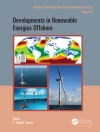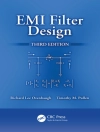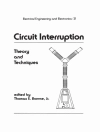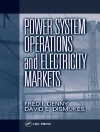This ninth and final volume in the series, Advances in Natural Gas Engineering, covers gas injection into geological formations, one of the hottest topics in the industry, with contributions from some of the most well-known and respected engineers in the world.
This timely book focuses on gas injection into geological formations and other related topics, which are very important areas of natural gas engineering and build on previous volumes. It includes information for both upstream and downstream operations, including chapters detailing the most cutting-edge techniques in acid gas injection, such as acid gas disposal, modeling, and much more.
Written by some of the most well-known and respected chemical and process engineers working with natural gas today, the chapters in this important volume represent the most state-of-the-art processes and operations used in the field. Not available anywhere else, this volume is a must-have for any chemical engineer, chemist, or process engineer in the industry. Advances in Natural Gas Engineering is a series of books meant to form the basis for the working library of any engineer working with natural gas today.
Table of Content
Preface xv
1 Acid Gas Injection from Startup to Stability–A Recap of 3 Years of Operation and Troubleshooting 1
Loni van der Lee, Jordan Watson, Laura Creanga and James van der Lee
2 Acid Gas Disposal–A View from the Trenches 19
Kristopher Kruse
3 Pipestone Acid Gas Injection System 35
Rinat Yarmukhametov, James R. Maddocks, Tim Oldham and Dan Simons
4 Acid Gas Injection Case Study for the Iraqi Region of Kurdistan 55
Mariana Alvis and Federico Games
5 The Success Story of Acid Gas Injection (AGI) in WCSB: The Past, The Present, The Future 73
Mohammad Tavallali, Robyn Swanson, Norbert Alwast, Vadim Milovanov and Ashley Anderson
6 Hydrates of Carbon Dioxide–A Review of Experimental Data 97
Bogdan Ambrozek and Eugene Grynia
7 Comparison of Models to Data for Phase Equilibria and Properties of CO2 + Contaminant Systems 189
Wayne D. Monnery
8 Numerical Investigation and Prediction of Critical Points of CO2 Binary Mixtures Using GERG-2008 205
Eduardo Luna-Ortiz
9 Alkanolamines–What is Next? 213
Jörn Rolker and Joe Lally
10 Anhydrous Triethanolamine as a Solvent for Gases 233
A.E. Mather, F.-Y. Jou and K.A.G. Schmidt
11 CCUS via CO2 Compression with Reciprocating Compressors 241
Patrick Campbell
12 Process and Design Aspects of Diaphragm Pumps 249
Rüdiger Bullert
13 Well Construction and Monitoring Considerations for AGI and CCS Wells 261
Ryan Bartko, Ben Banack and Henry Bland
14 Downhole Pressure and Temperature Observations at a CO2 Injector Under Differing Injection Conditions 271
Stephen Talman, Alireza Rangriz Shokri, Nathan Deisman and Rick Chalaturnyk
15 Case Study for the Application of CCUS to a Waste-to-Energy Italian Plant 279
Stefania Moioli, Giorgia De Guido, Laura A. Pellegrini, Elisabetta Fasola, Davide Alberti and Adriano Carrara
16 Key Results of Tomakomai CCS Demonstration Project 293
Yoshihiro Sawada, Jiro Tanaka, Daiji Tanase, Takashi Sasaki and Chiyoko Suzuki
17 Some Results of ERTF Carbon Capture Pilot Plant 317
Ahmed Aboudheir, Neil Rathva, Lin Li and Walid El Moudir
18 Evaluation of CO2 Storage Potential in the Deep Mannville Coals of Alberta: Vertical Well Injection Testing 337
Yun Yang, Christopher R. Clarkson and Michael S. Blinderman
19 Dynamic Miscibility of H2S/CO2 with Reservoir Oil in a Middle Eastern Triassic Reservoir 347
Liaqat Ali and Ahmad J. Sultan
20 Quantitative Evaluation of Dynamic Solubility of Acid Gases in Deep Brine Aquifers 363
Liaqat Ali, Ahmad J. Sultan, Russell E. Bentley and K. Patel
21 Highlights of the Northeast BC Carbon Capture and Storage Atlas 401
John Xie, Natalie L. Sweet and Allison J. Gibbs
22 A Novel Method for Calculating Average Formation Pressure of Gas-Reservoir-Type Underground Natural Gas Storage 411
Yubao Gao, Weiyao Zhu, Hongyang Chu and Ming Yue
23 Simulation of Multi-Zone Coupling Flow with Phase Change in Fractured Low Permeability Condensate Gas Reservoir 427
Wengang Bu, Weiyao Zhu and Debin Kong
Acknowledgments 436
References 436
Index 439
About the author
John J. Carroll, Ph D, PEng, is the Director, Geostorage Process Engineering for Gas Liquids Engineering, Ltd. in Calgary, Canada. Dr. Carroll holds bachelor and doctoral degrees in chemical engineering from the University of Alberta, Edmonton, Canada, and is a registered professional engineer in the provinces of Alberta and New Brunswick in Canada. His fist book, Natural Gas Hydrates: A Guide for Engineers, is now in its second edition, and he is the author or co-author of 50 technical publications and about 40 technical presentations.
Ying (Alice) Wu is currently the President of Sphere Technology Connection Ltd. (STC) in Calgary, Canada. From 1983 to 1999 she was an Assistant Professor and Researcher at Southwest Petroleum Institute (now Southwest Petroleum University, SWPU) in Sichuan, China. She received her MSc in Petroleum Engineering from the SWPU and her BSc in Petroleum Engineering from Daqing Petroleum University in Heilongjiang, China.
Mingqiang Hao, Ph D, is a senior engineer of reservoir engineering and the deputy chief engineer of Oilfield Development at the Research Institute of Petroleum Exploration &Development (RIPED), Petro China. His current main research interests focus on CO2-EOR and horizontal well for low permeability reservoirs.
Weiyao Zhu is a Professor of Mechanics at the University of Science &Technology, Beijing, holding the Chair in the Department of Building Environment of Energy Engineering and the Institute of Applied Mechanics. He is also the director of Mechanical disciplines at the University of Science &Technology Beijing. He has served as an editor of some Chinese academic journals, and as an Associate Editor of the Journal of Natural Gas Engineering. He has published twelve books and over 330 research papers and has 17 patents and 26 software copyrights to his credit. He has also been recognized with many professional and academic awards.












